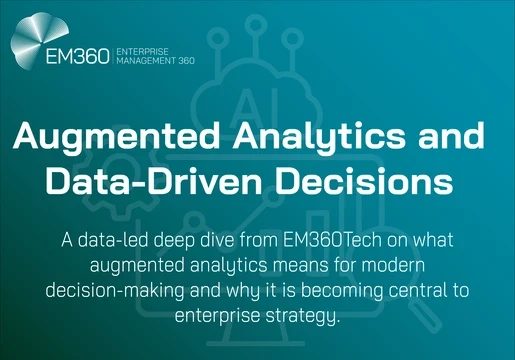We have worked with numerous non-profit organizations over the years and most share a few notable characteristics.
Compared with commercial companies, non-profits tend to be more mission-driven, consensus-driven, and resource-constrained. Although we recommend that all organizations create and maintain a data strategy to guide their data & analytics efforts and investments, it’s especially important for non-profit organizations.
A data strategy defines the goals, frameworks, and approaches that organizations use to harness data for business gain. It typically specifies an operating model, data architecture, data governance strategy, a data literacy program, a self-service strategy, and a project/product management approach.
Ultimately, a data strategy is a communications vehicle that explains to executives, managers, staff, and the data team itself what is going to be delivered and how during the next three years. (See “Data Strategy Guidebook: What Every Executive Needs to Know.”)

Mission Driven
Most people who work at non-profit organizations are drawn to the mission. They derive a certain degree of emotional satisfaction by knowing their work contributes to a cause bigger than themselves. Many are willing to sacrifice a higher-paying job for one that provides meaning and purpose. They are also often willing to work long hours and sometimes contribute their own money to further the organization’s mission and goals. As a result, non-profits are blessed with a highly dedicated and committed workforce and higher rates of worker productivity.
The downside, however, is that individuals can fall prey to a “hero” complex. They try to do more work than is realistic and often burn themselves out. This can lead to cynicism and resentment, creating a toxic atmosphere jarringly dissonant with the organization’s high aspirations and ideals. Data professionals everywhere are susceptible to the hero complex, but this is doubly true at non-profits.
A good strategy helps a data team work smarter, not just harder.
A data strategy helps combat the hero complex. With a vision and roadmap for the future, data professionals don’t get consumed by operational tasks and requests. They don’t spend nights and weekends working through backlogs or putting out fires. They are not tempted to undertake work they are not trained to do. A data strategy helps them establish the roles, processes, and capabilities to prioritize tasks, operate efficiently, and generate value. A good strategy helps a data team to work smarter, not just harder.
Case study. One mid-sized non-profit we helped had an executive team that was extremely committed to the mission, but had no data & analytics professionals. To compensate, the head of operations who had no technical background became heavily involved in the architectural and engineering details of potential solutions and dictated the roadmap of use cases. This created tension both within the organization’s project team and with the consultants they employed to create a roadmap and implementation plan. The team eventually worked through the issues and delivered a successful series of solutions but it would have been easier if the executive trusted the experts.
Consensus-Driven
Non-profits care deeply about their staff and want to create a harmonious working environment where individuals feel heard and cared for. As a result, most non-profits take a consensus-driven approach to decision-making. This means that decisions take longer than they do at commercial organizations, and one individual or group of individuals can delay a project until their concerns are heard and addressed. This creates stronger buy-in for a resulting solution but can also delay projects or decisions, reducing their overall impact.
A data strategy fosters consensus in the short run and streamlines decision-making in the long run.
A data strategy is critical for consensus-driven organizations because it concentrates strategic planning upfront rather than continuously as needs arise. It typically takes 6 to 12 weeks to create a data strategy that outlines all facets of how an organization will leverage data and analytics, including a sequence of use cases implemented using the architecture, programs, and operating model specified in the strategy. In other words, a data strategy fosters consensus in the short run and streamlines decision-making in the long run.
Case study. Another mid-size non-profit we worked with wanted a roadmap for implementing data-driven solutions. But rather than creating a data strategy, they wanted an implementation plan for a specific data solution. This organization had minimal data & analytics capabilities and didn’t realize the importance of creating a data strategy to guide its short- and long-term efforts. We had to develop a data strategy on the sly, backfilling it into the requested data solution to future-proof the implementation and gracefully support additional use cases, as they requested.
Resource-Constrained
Finally, non-profits rarely have the resources to fund data management initiatives, and when they do, they feel obliged to spend most of it on mission-centric activities. This eventually changes once the non-profit recognizes that a lack of data and analytics capabilities impedes its ability to achieve its mission. When that happens, the non-profit is willing to devote additional resources to data, but not too much, and rarely on a sustained basis. The mantra is: “Do just enough to get through the next cycle.”
Although it’s wise to start small and test new approaches and people to see how much value they generate, this approach when taken to an extreme is self-defeating. As the saying goes, it’s penny wise and pound foolish. A certain amount of investment in people and technology can save money in the long run. Few non-profit executives recognize how much time their staff spends finding and manipulating data.
Case studies. One university we worked with discovered that it had 87 data analysts and data scientists embedded in various departments, costing almost $11 million in “hidden” data expenses. Our data strategy devised ways to make those analysts more self-sufficient and productive by giving them access to clean, integrated data and advanced tools to find, analyze, and manipulate data.
Another non-profit client addressed its budget constraints by hiring a small core team of data & analytics professionals to address operational issues, such as fixing data quality issues, building and certifying reports, and training business users. When it needed to build new capabilities, it supplemented its internal team with external consultants to perform the work and move the organization to the next level.
Conclusion – Haste Makes Waste
The best way for non-profits to steward their data is to develop a data strategy before plunging headlong into development. Although this takes time and money which non-profits hold dear, it can save time and money in the long run and prevent burnout among staff. In addition, a data strategy communicates to the entire organization how and when data will be delivered to which functions, aligning the organization and the data team. In short, a data strategy helps non-profits achieve their mission.
This article was originally published on Eckerson Group







Comments ( 0 )